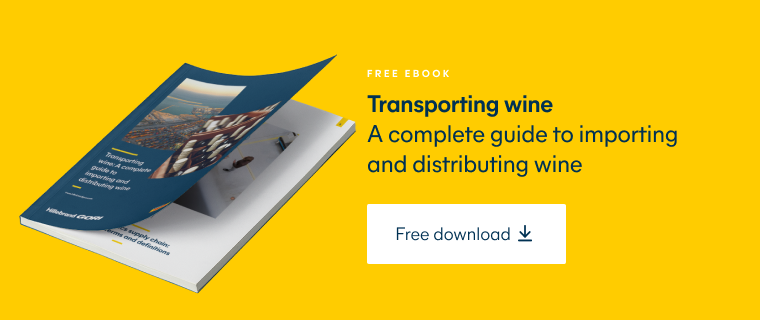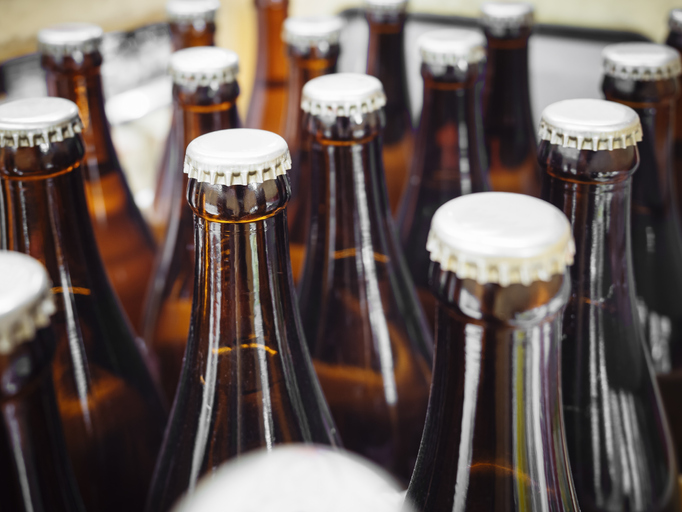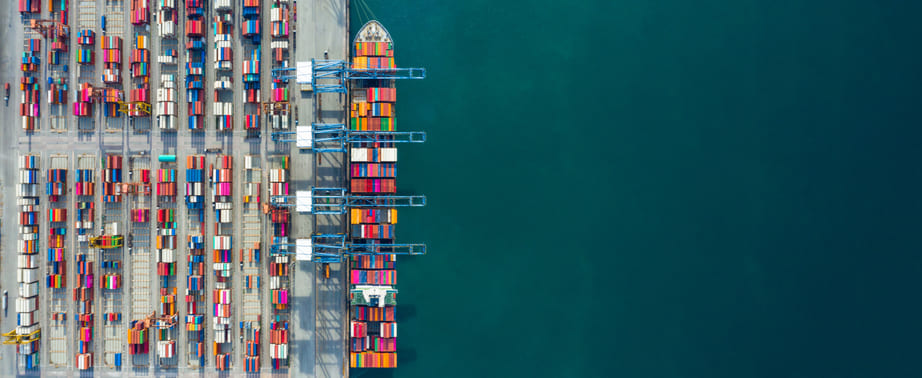Share this post
Rail freight solutions for wine importers
As a wine importer, you have a lot of options when it comes to moving wines around. While rail freight might not be the first mode of transport that comes to mind, it’s a safe, economical, and environmentally friendly choice. Read on to get on the right track with rail freight.
What is rail freight?
Today, rail freight simply means the shipment of goods, such as wine, via trains running on railway infrastructure. But did you know that rail freight has been around since the time of the Ancient Greeks? As far back as 600 BC, they used a paved track of grooves cut into the rock to transport wagons up to 8.5 km across the Isthmus of Corinth. By the late middle ages, wagonways with wooden rails and horse-drawn traffic could be found across Europe. In 1784, James Watt patented a design for a steam locomotive and the world’s first steam train railways appeared in the UK in the early 19th Century. Soon rail freight became the most popular form of delivering goods long-distances across land.
However, with the introduction of trucks, shipping containers, and the arrival of air freight options, trains are no longer the top choice for transporting goods. But rail freight still offers benefits for wine importers, especially at times of reduced capacity in other transport modes.
Wine is a sensitive product and there’s a lot to think about when you’re arranging transportation. For example, wine bottles are fragile and need special protection. Wine itself needs to be transported under optimum conditions in terms of temperature, humidity, and vibration. You also want to make sure your shipment is safe from theft and arrives on time.
Luckily, rail freight can put your mind at ease when it comes to all these concerns and more.
What are the advantages of rail freight?
Cost
In terms of cost, rail freight is a good alternative to long-haul trucking, particularly when road capacity is tight or fuel costs rise. Thanks to its capacity for moving large volumes of wine at once over long distances, (one train can transport as much freight as 300 trucks) moving one ton of freight one mile by rail can be cheaper than by truck. So, switching to rail freight trains for the main transport leg of a long-distance intermodal shipment could save you money.
Environmental sustainability
Consumers are increasingly concerned about climate change and environmental issues. With three-quarters of Millennials stating a preference for brands that prioritize sustainability, one of rail freight’s big advantages is that it is one the greenest and most fuel-efficient forms of transport.
Globally, rail transports 7% of passengers and 6% of freight, yet it contributes only 1% of total transport emissions. Compared to road freight, rail produces less than one-fifth of the greenhouse gases per ton transported per kilometer.
This is partly down to the fact that rail is the only transport mode that has been widely electrified. Over 85% of passenger train journeys and 55% of rail freight shipments, use electric trains and do not emit any direct CO2 emissions.
Thanks to their partnership with Hillebrand Gori, Lanchester Wines, a UK wine importer, uses rail to save between 45% and 68% in carbon emissions compared to bringing products by road.
Capacity and scalability
Compared to road freight, trains also enjoy an advantage in terms of the volume of wine they can carry. Where a truck might carry 24 pallets, or 1,200 cases, a single boxcar can hold 80 pallets or 5,275 cases. Trains are so versatile, they can even carry wind turbines. This greater capacity can really add up to savings on cost and carbon emissions when it comes to transporting goods on long-distance routes. Of course, it’s not necessary to book Full Container Loads (FCL) to take advantage of rail freight as Less than Container Loads (LCL) are always an option.
Temperature control
Moving wine long-distances means it can be exposed to extreme temperature and humidity fluctuations which can damage the product. Thanks to refrigerated containers, rail freight allows importers to ship their wine in a temperature-controlled environment. Also known as reefers, these containers are available in a range of sizes that can carry up to 20 standard pallets (1m x 1.2m) and can help ensure that your wine arrives at its destination in the best possible condition.
Another solution is to use an insulated liner within a dry container. This cost-effective and environmentally friendly option can guard against thermal shocks that can spoil your wine.
Hillebrand Gori’s patented insulation liner offers 94% radiant heat reflection and also protects your wine from humidity infiltration, condensation, cross-contamination, and bad smells. Moreover, it generates less CO2 emissions than a refrigerated container, and they are suitable for all standard containers and pallet sizes.
Safety
With wine shipped in glass bottles, even minor traffic accidents can result in significant damage to your stock. This is another area where rail outperforms road transport. In fact, rail accidents occur around 40 times less than road traffic accidents.
Security
Wine moved by train is at less risk of crime than if moved by truck. While trucks can be parked in areas such as parking lots, rail yards are highly secure spaces so theft from cargo trains is very rare.
Reliable lead times
Although moving your wine by rail freight requires longer lead times than shipping by road freight, fixed train schedules mean you can rely more on your deliveries departing and arriving on time.. Unforeseen events such as traffic jams or inclement weather are less likely to delay shipments by rail freight in comparison to road freight.
What’s more, due to low employee turnover rates and a smaller requirement for labor, rail has proved to be more resilient than road freight in the face of recent worker shortages.
Global reach
As of 2020, there were 1.6m km of train lines in operation around the world. Europe has the densest rail network in the world and approximately 3.13tn tonne-kilometers of goods were hauled across its rail network in 2019, making it the second-largest region for rail freight worldwide. The EU plans to double usage over the next 7 years as part of its drive to achieve net zero carbon emissions by 2050 and to reduce road traffic congestion.
Meanwhile, China and the US together account for around half of global rail freight activity.
In the US, the rail network stretches 140,000 miles across the country,connecting east and west coast through major terminals like Chicago. When combined with the infrastructure in Canada and Mexico you can also move wine by rail to almost anywhere in North America.
What if my wine shipment route is not served by rail freight?
Not all wine production and consumption regions are located right beside a rail freight terminal. This is where intermodal transportation can help.
What is intermodal transportation?
This is the logistics industry’s term for moving goods using two or more modes of transportation. It involves any combination of rail transport, road transport, sea shipping, or air freight, so almost every international delivery uses intermodal transportation.
Wine that is packed into shipping containers can be seamlessly interchanged between trucks, ships and trains. When a truck carrying wine arrives at a rail freight yard, cranes can lift the container from the truck chassis and place it directly onto the train. At the other end, the process happens in reverse to load the wine container onto another truck for final delivery.
In terms of rail network infrastructure, the US has the largest system in the world with 149,000km of tracks available in 2021.
When it comes to the amount of freight transported by rail, China comes out on top with 2,852,068 million tonne-kilometers (mtk) moved in 2019.
In the EU, the main types of freight in 2021 were metal ores, mining and quarrying products, and peat. The most common types of freight in the U.S. are coal, chemicals, and grain.
According to the WEF, Japan has the highest quality railroad infrastructure in the world with 6.8 points. Hong Kong comes in second with 6.5 and Switzerland is third with 6.4.
Germany’s Deutsche Bahn is the biggest rail freight company in Europe. In 2020, it transported almost 76,700mtk of cargo. The second biggest, VDV, is also German. VDV moved 37,772mtk in 2020. Third is Austrian company OBB, which hauled 24,232mtk.
Here at Hillebrand Gori, we have an unrivaled knowledge of the best way to preserve the quality of wine in storage and in transit and we’re proactive to your needs.
Contact us to make your wine importing more sustainable with our dependable, green, and fast overland rail services.
How can we help your business grow?





